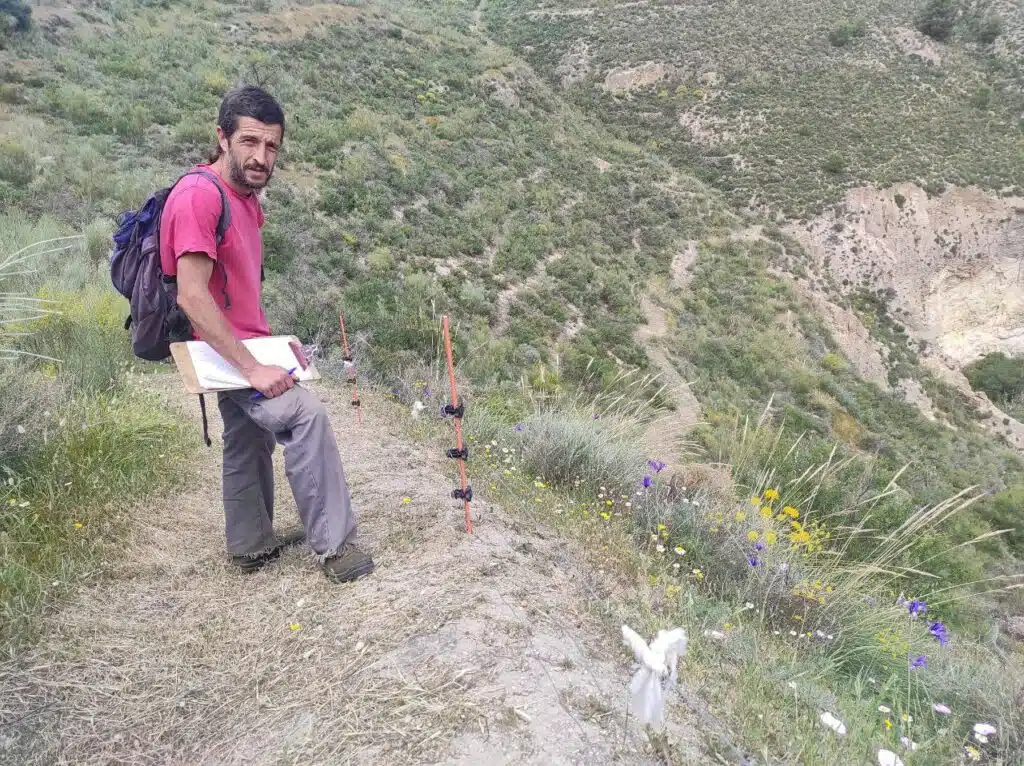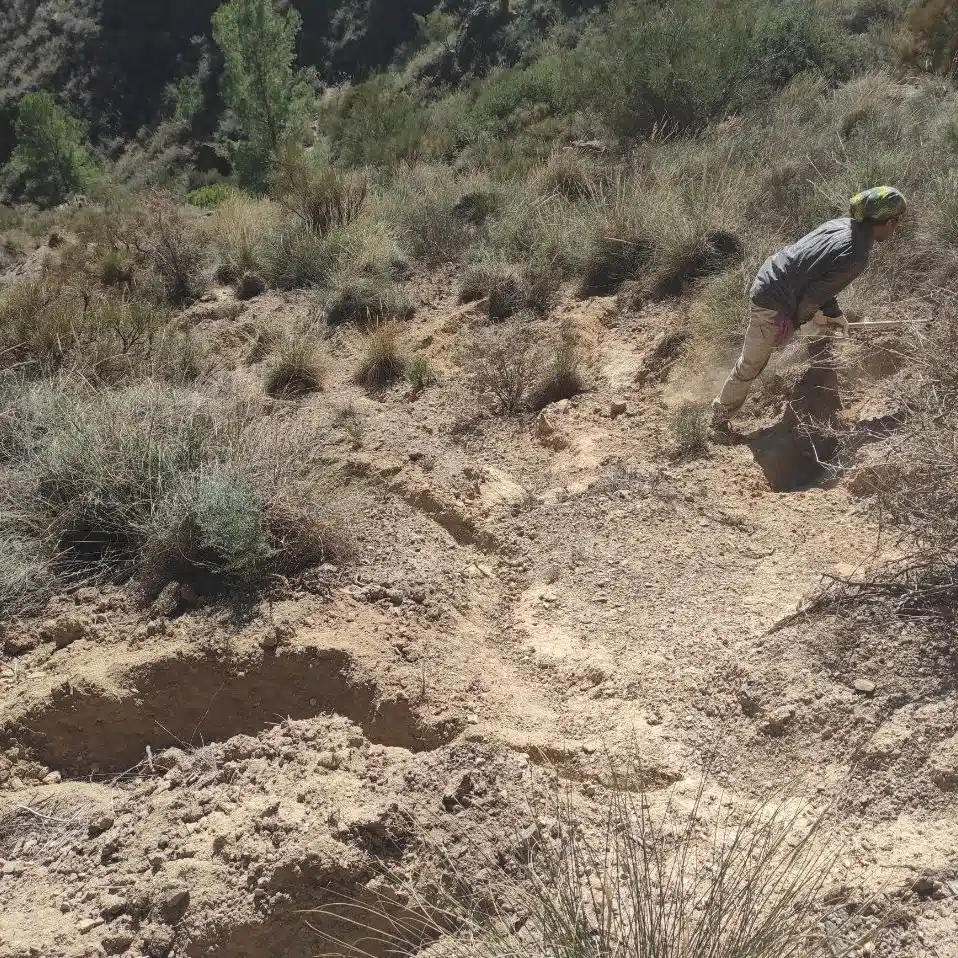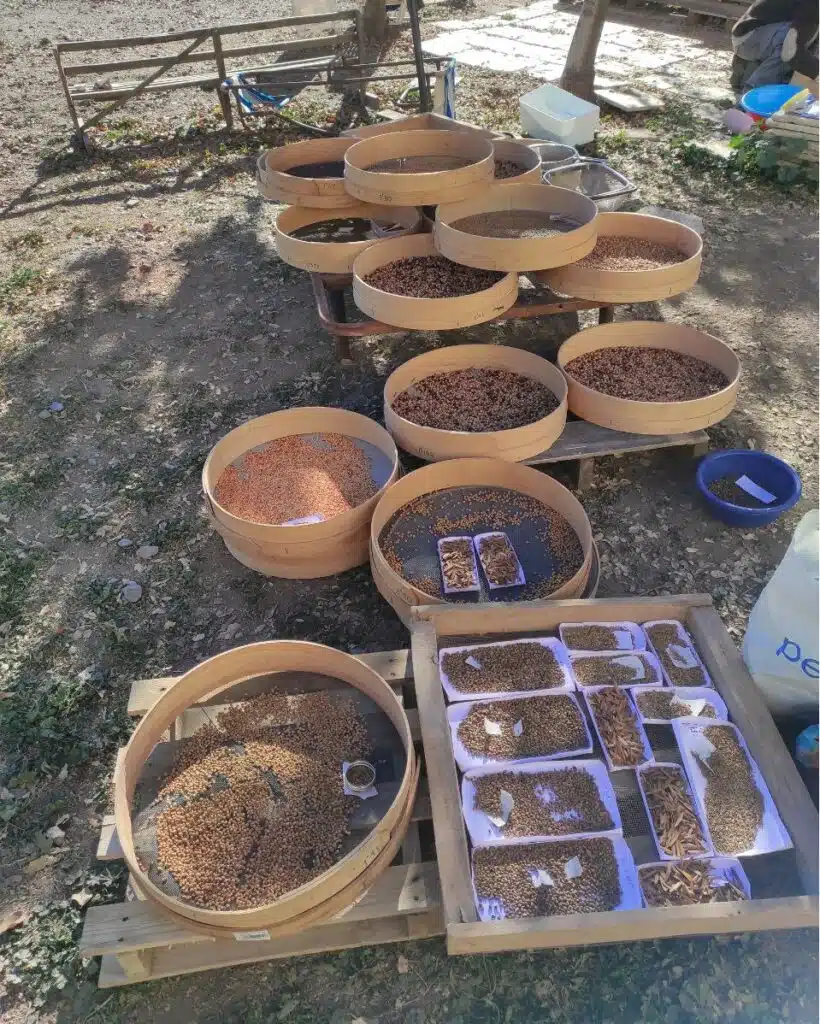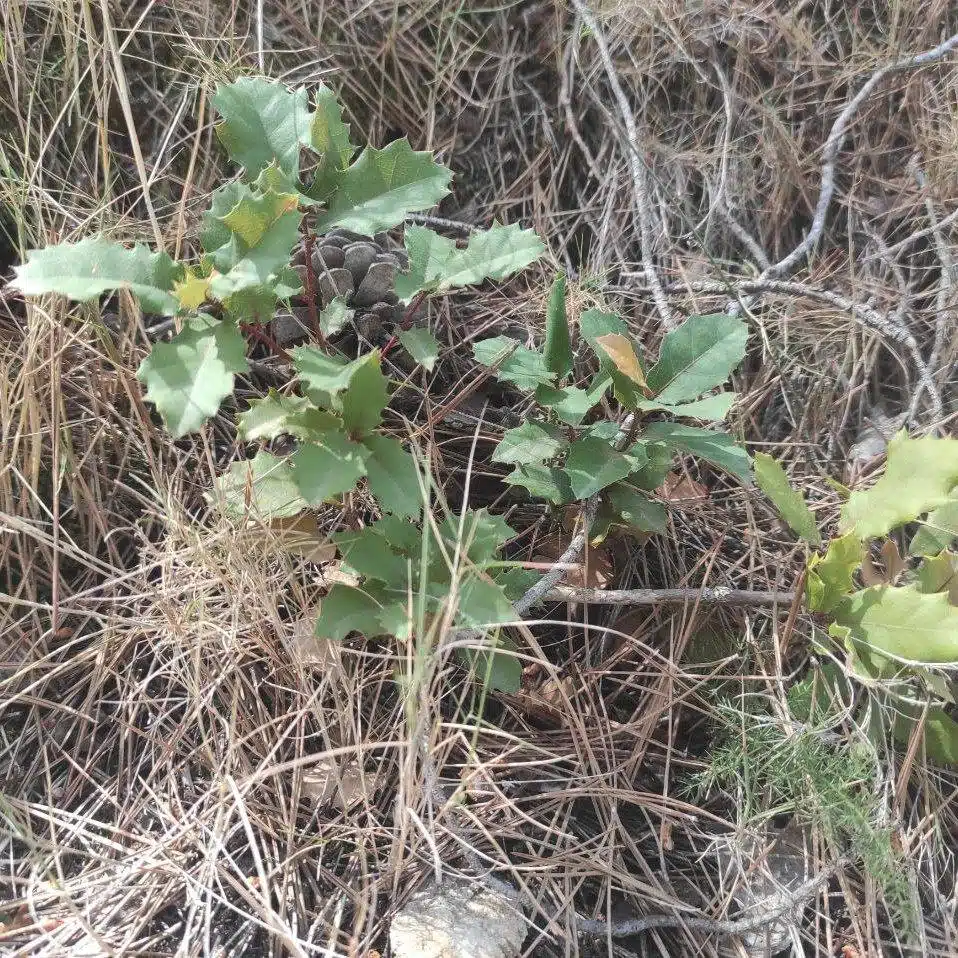Over the past few weeks, we have begun monitoring the germination of all the seeds sown during the winter. We are currently finalizing the protocol for organizing and systematically recording these counts, which will officially begin next week and are expected to continue for approximately two to three weeks.
Initial field visits have already revealed the emergence of seedlings in several areas. Although still small —some barely reaching 4 centimeters in height— many are already showing their first true leaves. This slow yet steady growth is typical of Mediterranean woody species, whose development strategy is well adapted to the region’s climatic conditions.
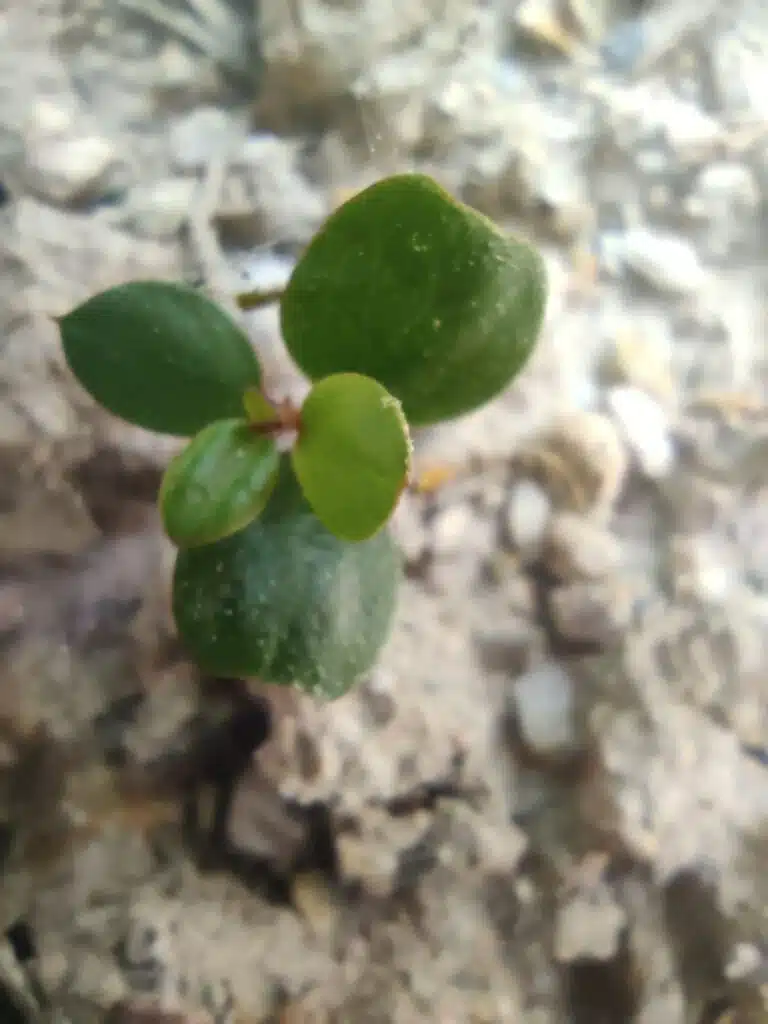
The image accompanying this post shows a young specimen of Rhamnus lycioides, commonly known as black hawthorn. This native shrub, under favorable conditions and with enough time, can take on a hemispherical shape with a radius of 2 to 3 meters. Beyond its ecological value as a food source—its small fruits are eaten by birds—it plays an important role as a shelter for local wildlife, thanks to its dense and thorny branches.
We continue to move forward with this monitoring process, which is essential to better understand the dynamics of regeneration in our ecosystems.

